Museum Exhibits

The U.S. Army Airborne and Special Operations Museum honors the courage of Soldiers from the 1940 Parachute Test Platoon to today’s Global War on Terror. The museum preserves their extraordinary feats and shares the stories of America’s Airborne and Special Operations Forces who “jump into battle.” It stands as a source of pride for all who have served and continue to serve.
Journey through history beginning with the first Parachute Test Platoon in 1940 and ending with today’s Airborne and Special Operations units. From World War II to the Cold War and beyond, the exhibits show how courage and dedication have defined every generation of Soldiers.
EARLY AIRBORNE
On August 16, 1940, the first U.S. Soldiers leapt into history, creating the American paratrooper. Led by Lt. Bill Ryder and Pvt. William King, these pioneers—joined by legends like Bud Miley, Bill Yarborough, and Maj. Gen. William C. Lee, the “Father of the U.S. Airborne”—transformed a bold experiment into a powerful new force of war. Their story begins here.
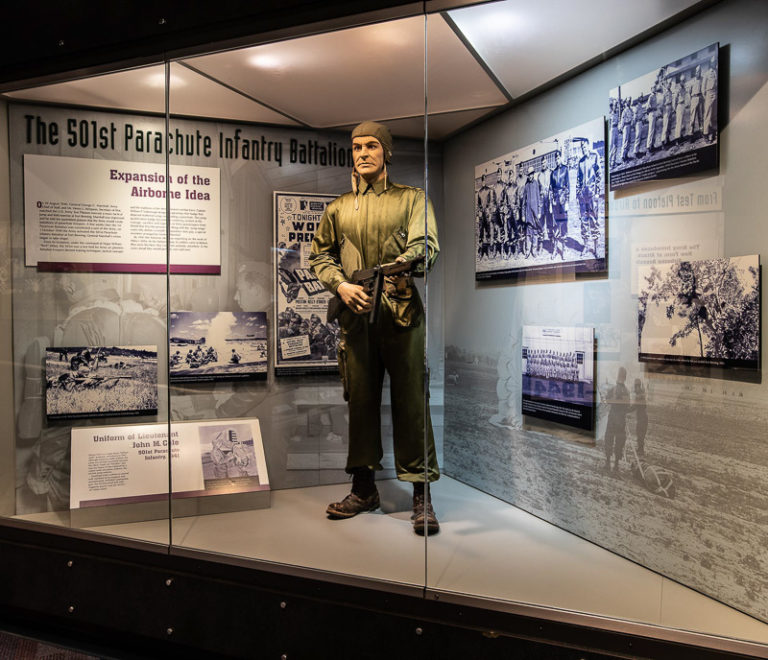
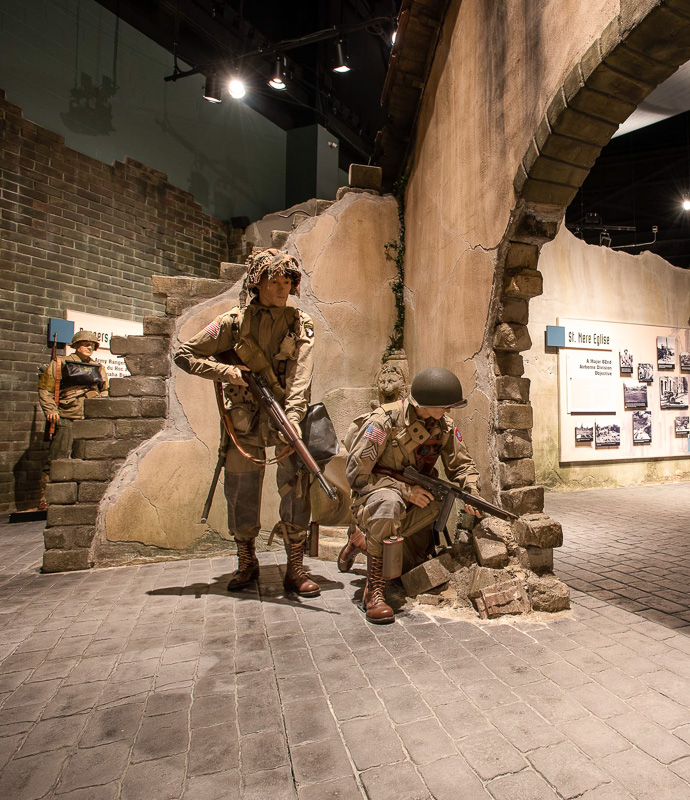
WORLD WAR II
World War II was the proving ground of the Airborne. Five divisions—alongside Rangers, OSS, and the 1st Special Service Force—spearheaded daring missions from Sicily to Normandy to Corregidor, shaping victory in Europe and the Pacific.
Step into a French village on D-Day, where paratroopers leap into the night sky and C-47 “Skytrains” roar overhead. Walk war-torn streets marked by bullet holes, then cross into the Pacific Theater through immersive displays and rare wartime footage. Among the highlights is one of the world’s finest restored WACO CG-4A gliders—a fragile craft once flown by the thousands into battle.
KOREA AND COLD WAR
After WWII, a new fight emerged—the global spread of communism. While the U.S. and Soviet Union waged a tense Cold War, “hot” battles broke out in Korea.
In 1950, the 187th Airborne Regimental Combat Team leapt into action with daring parachute assaults, including Operation TOMAHAWK in 1951. Visitors can stand alongside Medal of Honor recipient Corporal Rudy Hernandez, who fought against overwhelming odds to save his fellow paratroopers.
The Korean War also gave rise to new elite forces. The Eighth Army Ranger Company became the model for modern Rangers, including the historic 2nd Rangers—the only African American Ranger unit in U.S. history. That same year, the 10th Special Forces Group was established at Fort Bragg, laying the foundation for today’s Special Forces.
Another covert unit, the “White Tigers” (8240th Army Unit), operated deep inside North Korea, leading partisan fighters in raids, rescues, and sabotage missions so secret they weren’t revealed until decades later.
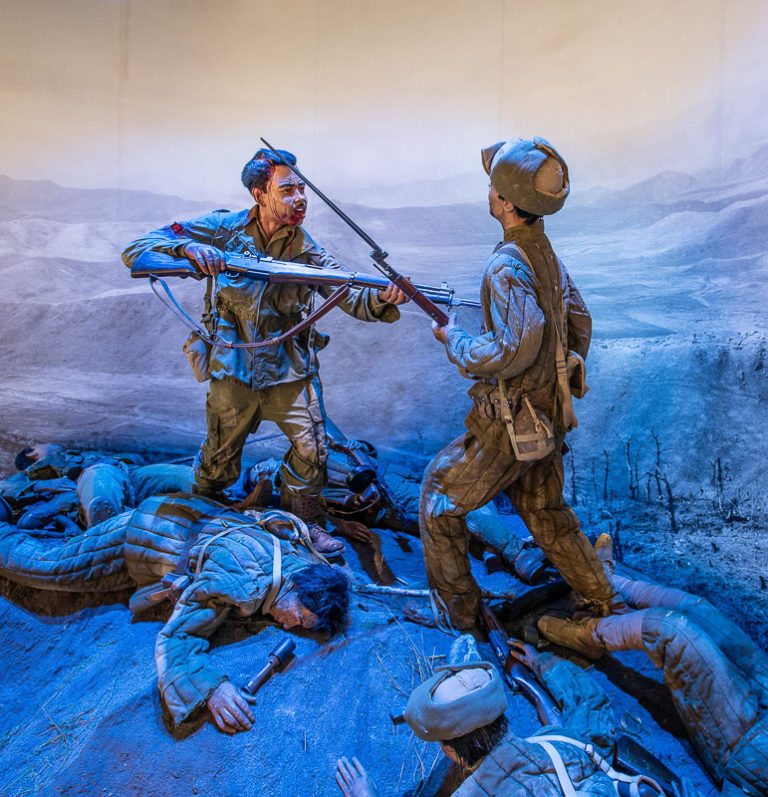
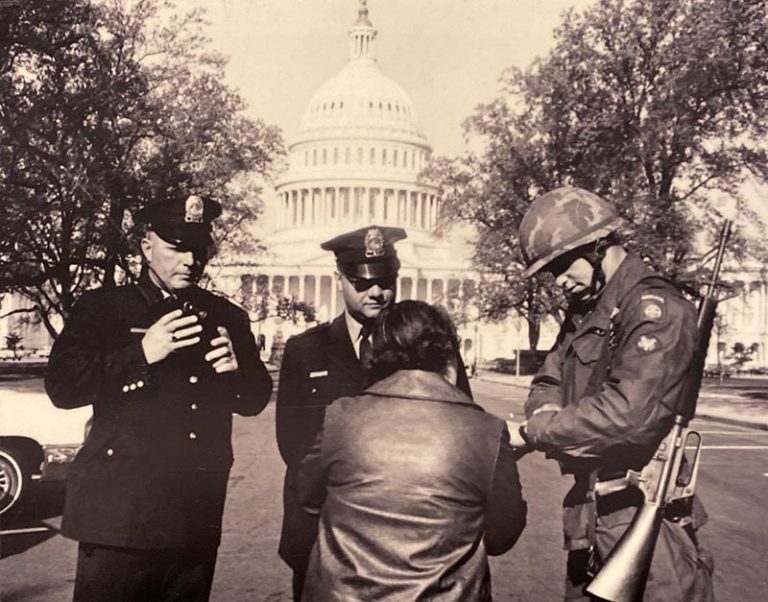
THE HOMEFRONT: CIVIL UNREST
During the Cold War, unrest wasn’t only abroad—it was felt at home. Airborne units were deployed to American cities from Miami to Detroit to restore order during times of crisis.
In 1965, the 82nd Airborne and 7th Special Forces Group joined international partners in the Dominican Republic, leading the largest overseas deployment since WWII. This peacekeeping mission captured the nation’s attention even as another conflict—the war in Vietnam—was escalating.
VIETNAM
In Vietnam, Airborne and Special Forces units faced one of the most challenging wars in U.S. history. The 101st “Screaming Eagles,” the 82nd, the 173rd “Sky Soldiers,” and Green Berets fought with courage in brutal jungles, often alongside indigenous allies.
At the center of this exhibit is a UH-1 “Huey” helicopter, frozen in action with its pilot at the controls, gunner ready, and paratroopers on the ground. Around it, powerful stories of heroism come to life:
- Specialist Lawrence Joel, a medic with the 173rd, treated thirteen wounded Soldiers under heavy fire during Operation HUMP—despite being shot twice himself. His bravery earned him the Medal of Honor and the nation’s gratitude.
- Chaplain Charles Watters, serving with the 173rd, ministered to Soldiers in the heat of battle. He gave last rites under fire and was ultimately killed while rescuing the wounded—earning him a posthumous Medal of Honor.
- 1LT James “Nick” Rowe, a Green Beret, endured five years as a POW in the “Forest of Darkness” before escaping. His survival experience shaped the Army’s SERE training, still used by Special Forces today.
From helicopter assaults to covert reconnaissance, the Vietnam exhibit immerses visitors in the courage, sacrifice, and resilience of Soldiers who carried the fight in a war without front lines.
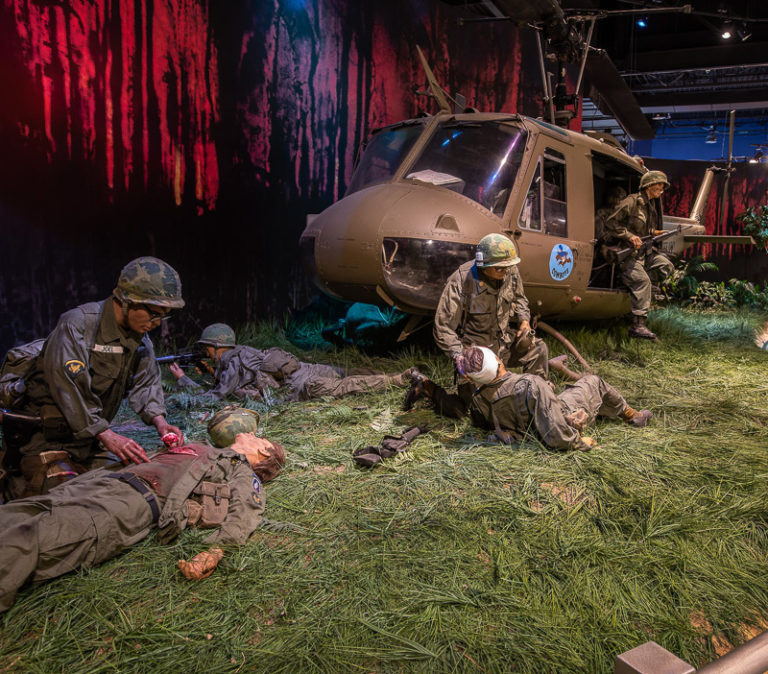
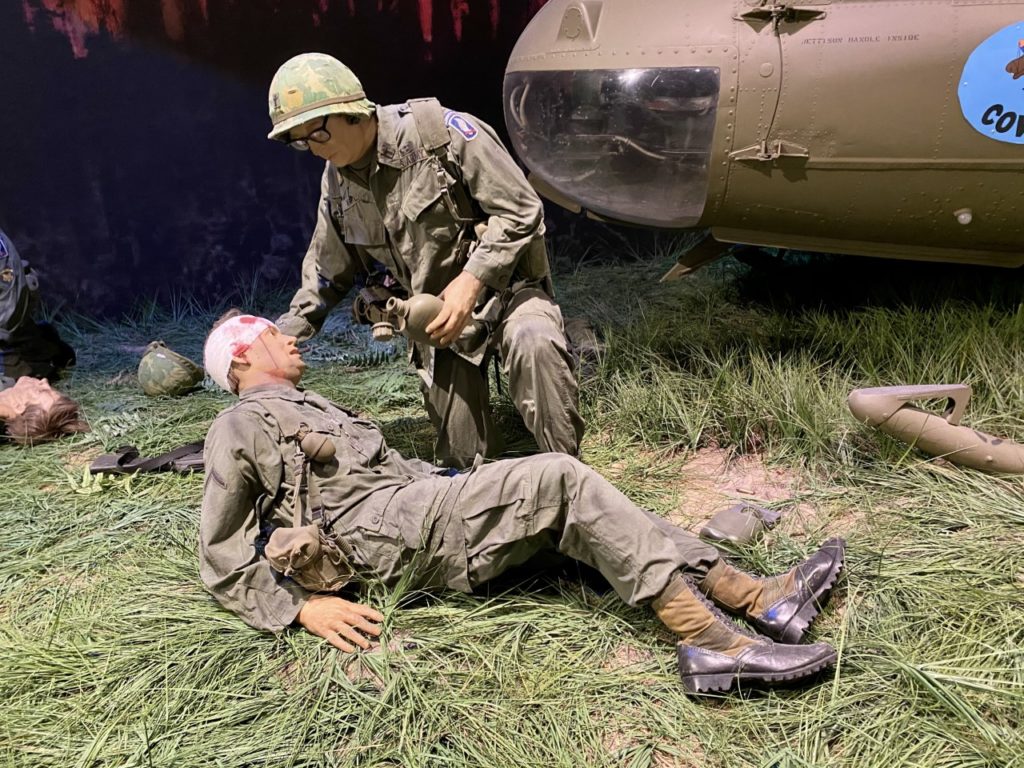
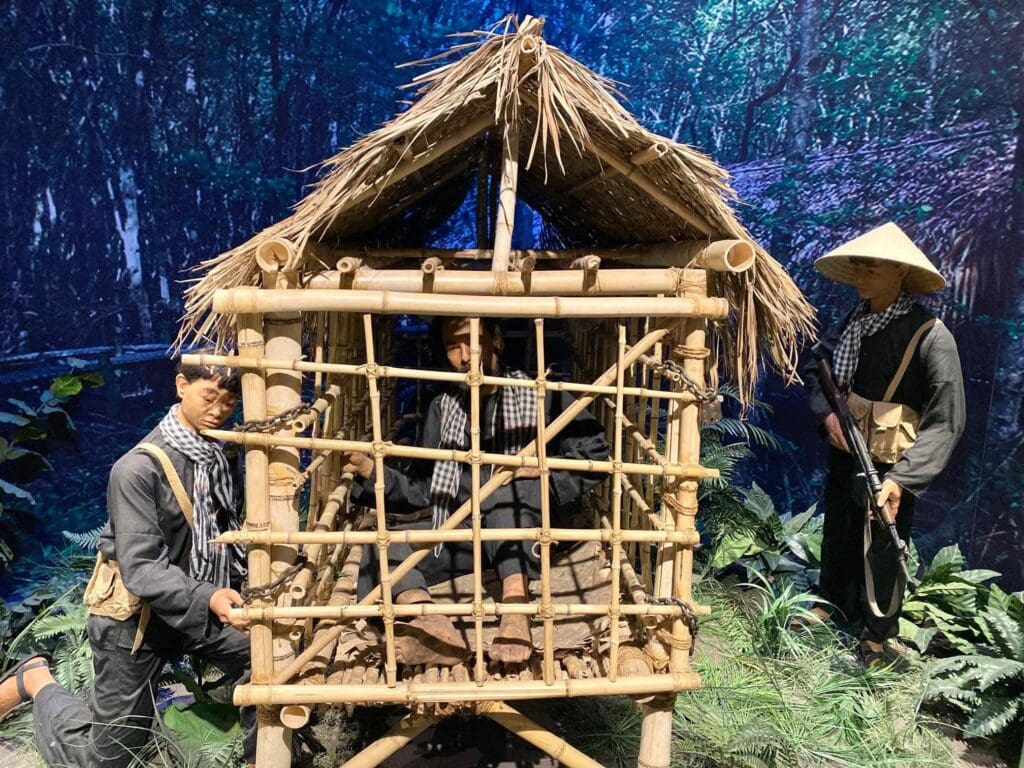
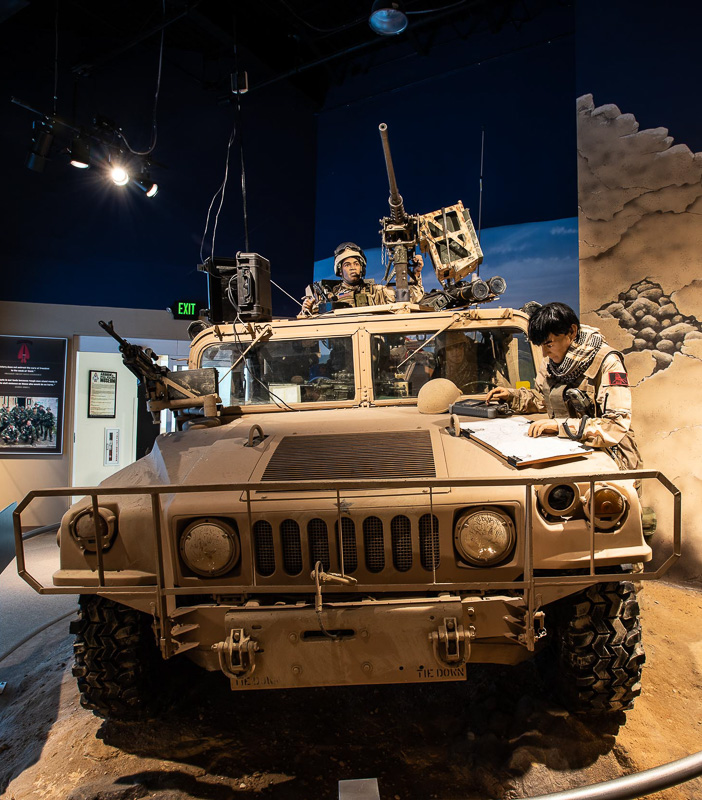
CONTINGENCY OPERATIONS & TRAINING
Since Vietnam, U.S. Airborne and Special Operations forces have led missions across the globe—from Grenada to Panama to the Persian Gulf—shaping America’s rapid-response power.
One of the most daring moments came during Operation JUST CAUSE in Panama, 1989. Special Operations “Little Birds” landed on a prison rooftop under fire, freed an American hostage in just six minutes, and escaped through a hail of bullets. Nearby, the lightweight but powerful Sheridan tank—air-dropped into combat—smashed through roadblocks and enemy strongholds. The very Sheridan on display fought in Panama and later rolled into the Saudi desert to face Iraq in 1990.
GLOBAL WAR ON TERRORISM
When the Soviet Union collapsed, a new threat rose—Islamic extremism. On September 11, 2001, terrorists struck the World Trade Center, the Pentagon, and attempted the U.S. Capitol, killing nearly 3,000 people.
In response, Special Forces became America’s “weapon of choice.” Partnering with the Northern Alliance in Afghanistan, they toppled the Taliban and dismantled Al-Qaeda strongholds. Task Force DAGGER led the first waves of Operation Enduring Freedom, proving the speed and precision of U.S. Special Operations.
At the museum, visitors step inside an Afghan hut to see how a handful of Green Berets worked with local fighters to change the course of history—and how America’s Airborne and Special Operations Forces continue the fight against terrorism today.







